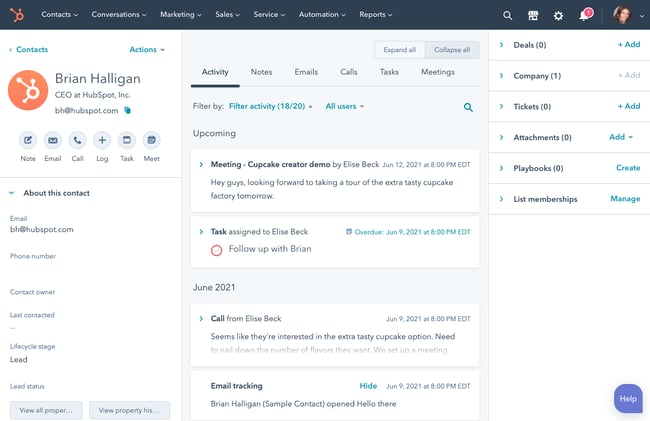What is RevOps?

Let’s take a deeper dive into the concept of RevOps, how it relates to businesses, and how it can help companies achieve predictable revenue and business growth.
The Rise of Revenue Operations (RevOps)
Traditionally, companies have siloed departments for sales, marketing, and customer success, and each department had its own goals and metrics. This leads to misaligned companies, where each department operates independently of each other, resulting in operational disruptions, inconsistent customer experiences and revenue leakage.
However, as companies started adopting alternative business models, such as subscription-based, the importance of aligning sales, marketing, and customer success teams became more apparent. This led to the rise of RevOps, a strategic approach that unifies the operations management and entire team under one umbrella, with the goal of driving revenue growth.
RevOps is a holistic approach that considers the entire customer journey, from customer acquisition to retention, and aligns all revenue-generating teams towards the primary focus of driving profit growth. It involves a combination of processes, systems, tools, and people, with the aim of achieving predictable business growth and targets.

RevOps framework
The RevOps framework is outlined by a strategic approach that helps companies align their profit-generating teams, with the goal of driving improved profitability. The framework consists of three core components: people, process and technology.

People
The human component involves aligning sales, marketing and customer service teams, as well as other functions such as finance. By aligning them all toward the same goals and creating a culture of collaboration and accountability, companies can drive revenue growth and achieve their bottom-line targets.
Processes
This component involves optimizing procedures to improve operational efficiency and effectiveness. This includes streamlining lead management, improving sales cycle time and increasing pipeline velocity.

HubSpot CRM. Source: HubSpot
Technology
The technology component of the RevOps framework involves implementing revenue operations tools such as CRM, marketing automation, sales enablement, and customer success management software. Technology allows improving the efficiency of people and processes and increasing their effectiveness.
Yes, RevOps is much more than theory.
Check out RevOps Case Studies!!!
Get inspired to take your Revenue Growth to the next level.

The Role of Revenue Operations Team
The RevOps team is responsible for the implementation and execution of the revenue operations model. Its primary focus is to ensure the entire company is on the same page and working towards the same targets. This team is responsible for driving revenue growth by optimizing the revenue process, improving forecast accuracy, increasing pipeline velocity, and improving key metrics such as customer acquisition cost (CAC) and customer lifetime value (CLV).

The RevOps team's structure varies from company to company, depending on the business's size and complexity. However, it typically includes a Chief Revenue Officer (CRO), a Revenue Operations Manager, and a team of analysts who work together to ensure the entire company is aligned towards the goal of driving growth.
The Benefits of RevOps for Businesses
Aligned Companies
As noted above, Revenue Ops ensures that the entire enterprise is aligned to drive profit expansion. This helps to eliminate silos and improve communication between departments, resulting in more efficient and effective processes.

Predictable Revenue
RevOps enables companies to achieve predictable revenue by optimizing the operational processes, improving forecast accuracy, and increasing pipeline velocity. This empowers businesses to set realistic targets and plan for future development.
Increased Revenue
With Revenue Operations, companies can generate more revenue and improve key metrics such as CAC and CLV. By optimizing the operational framework, you can capture more qualified leads, increase profit potential, boost customer lifetime value and reduce churn.
Improved Customer Experience
Revenue Ops considers the entire customer journey, from customer acquisition to retention. This helps companies improve the customer experience by providing a consistent and seamless experience across all touchpoints.

Improved data model quality
RevOps uses consistent data models to collect and process information. This ensures that the data is accurate and up to date, so that companies can make more informed decisions and improve the efficiency of their operational processes.
Conclusion
RevOps is a strategic approach that helps businesses align their revenue-generating teams towards the primary focus of driving recurring revenue and growth. The RevOps framework consists of three core components - people, process, and technology - that work together to optimize the operational processes and achieve predictable business scaling.
By aligning all teams towards the same goals and creating a culture of collaboration and accountability, companies can drive growth and achieve their targets. By optimizing the processes, they can improve efficiency and effectiveness, streamline lead management, and increase pipeline velocity.
Implementing the RevOps framework requires a shift in business practices and processes, but the benefits are clear. Aligning departments makes it easier to create a customer-centric approach, increase customer lifetime value, reduce customer churn and generate more profit streams from the existing customer base.
In today's fast-paced and competitive business landscape, implementing RevOps can be the key to success.
Frequently asked Questions about what is RevOps
What is the difference between RevOps and Sales Operations?
Sales Ops focuses on optimizing the sales process, supporting the sales team, and sales reps, while Revenue Ops focuses on aligning all revenue-generating teams to drive business growth. RevOps encompasses Sales Operations (Sales Ops), as well as Marketing Operations (MOps) and Customer Service Operations (Service Ops), to create a more holistic approach to revenue generation.
What are the benefits of implementing a RevOps framework?
Implementing a Revenue Ops framework can help businesses achieve predictable revenue growth, increase efficiency and effectiveness, streamline lead management, reduce customer churn, and improve the customer experience.
How do you measure the success of a RevOps strategy?
Key metrics to measure the success of a RevOps framework include revenue growth, forecast accuracy, lead-to-opportunity conversion rates, pipeline velocity, customer lifetime value, and customer churn.
How long does it take to implement a RevOps framework?
The time it takes to implement a RevOps framework depends on the complexity of the business processes, the existing technology stack, and the readiness of the revenue-generating teams. It may take several months to a year to fully implement a RevOps strategy.
What kind of businesses can benefit from implementing a RevOps strategy?
Any business that relies on a subscription-based business model, has a complex sales process, or has multiple revenue-generating teams can benefit from implementing a RevOps framework.
How do you build a RevOps team?
Building a RevOps team involves identifying the key roles and responsibilities, determining the necessary skill sets and experience levels, and creating a team structure that supports the RevOps strategy. This team should include representatives from sales, marketing, and customer success operations, as well as a Chief Revenue Officer or Revenue Operations Manager.
What is the ideal revenue operations team structure?
It will depend on the specific needs of the business, but typically includes a Chief Revenue Officer or Revenue Operations Manager, as well as representatives from sales, marketing, and customer success operations. The team should have a clear delineation of roles and responsibilities, and should work together to optimize the revenue-generating process. The size of the team will depend on the size and complexity of the business, but should be sufficient to support the full RevOps team framework and achieve revenue growth goals.
What kind of technology is needed to support a RevOps strategy?
Technology needed to support a RevOps framework includes a CRM system, marketing automation platform, sales enablement platform, customer success management platform, and data analytics tools. The specific tools and technology stack will vary depending on the business needs and existing technology infrastructure.
Yes, RevOps is much more than theory.
Check out RevOps Case Studies!!!
Get inspired to take your Revenue Growth to the next level.
